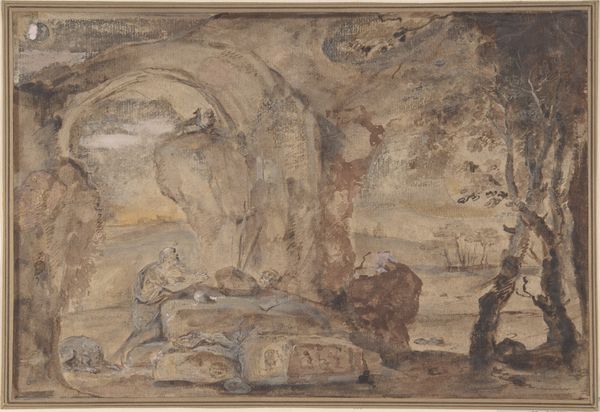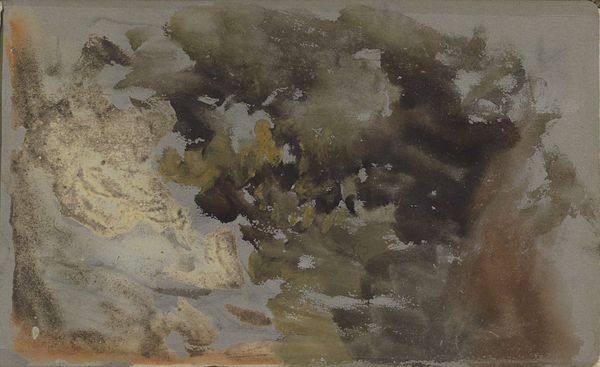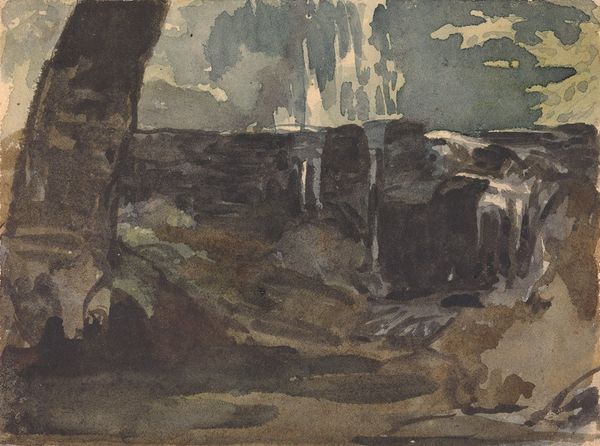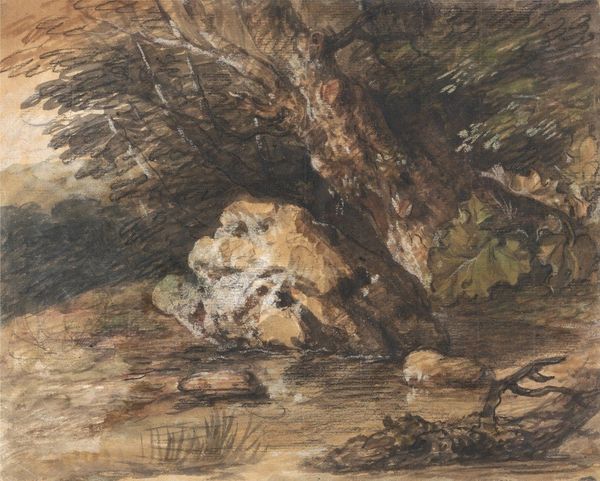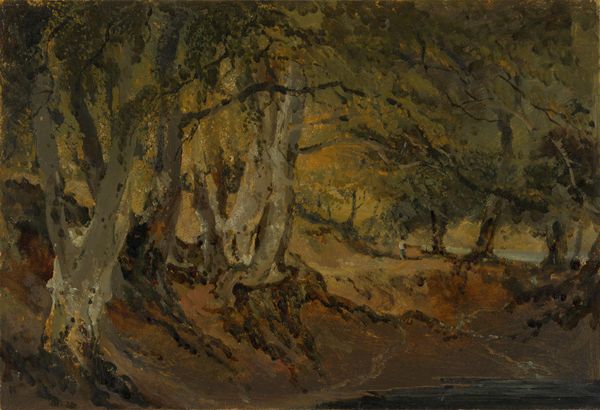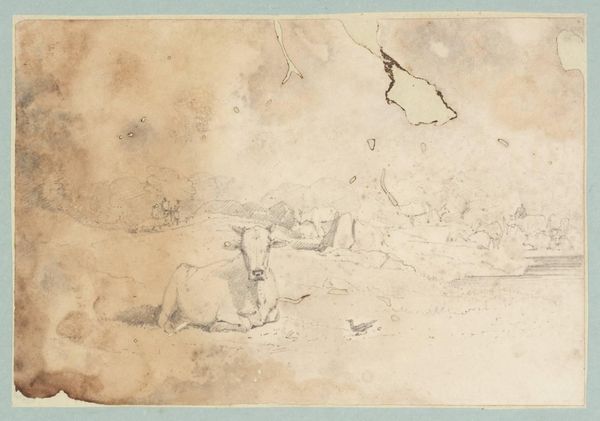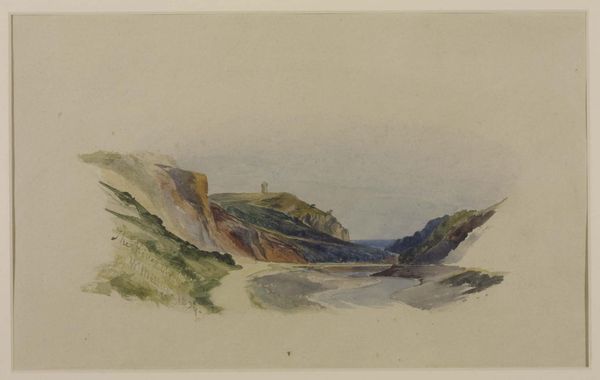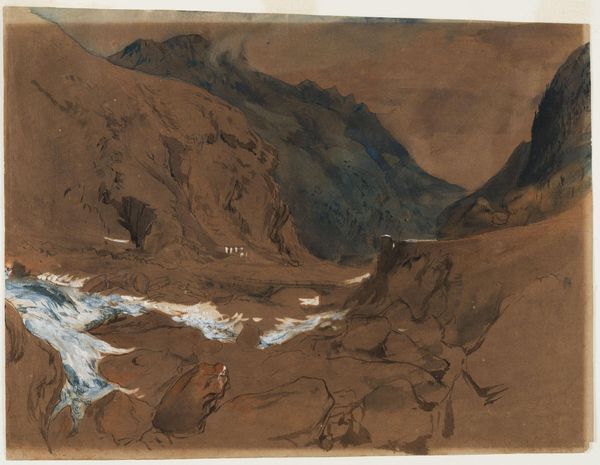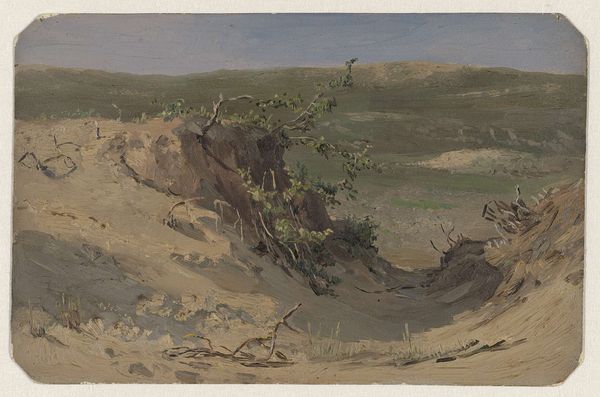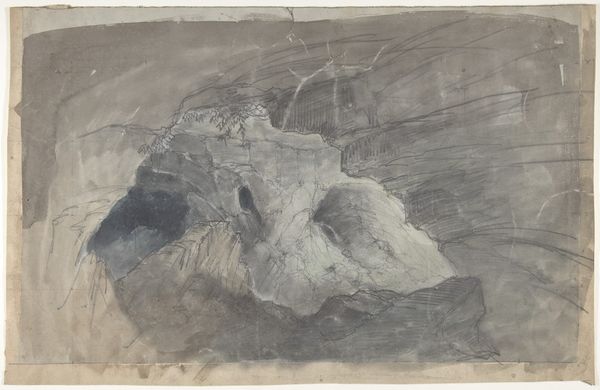
Dimensions: support: 228 x 333 mm
Copyright: CC-BY-NC-ND 4.0 DEED, Photo: Tate
Curator: Here we have John Sell Cotman’s "On the Greta," a watercolor landscape painting currently housed in the Tate Collection. It feels...stark, somehow, even in its earth tones. Editor: Stark, yes, and subdued. I see a landscape grappling with industrialization, perhaps? The Greta River, while naturally beautiful, was also vital for industry. Curator: Ah, I hadn't considered that reading. I was drawn to the arrangement of light, almost stage-lit against the darker recesses of the background. Editor: Cotman's choice to mute the vibrancy, focusing on the earthiness, speaks volumes about the perceived "cost" of progress. Curator: It’s a fascinating tension, isn't it? Between appreciating natural beauty and acknowledging the often destructive forces at play. Editor: Exactly. It’s a landscape pregnant with socio-economic implications. Curator: So, on one hand, we have a serene depiction, and on the other, a critique of industrial impact on the environment. Editor: Indeed. It encapsulates both, creating a dialogue about our relationship with the land. Curator: Well, I certainly won't look at a peaceful river the same way again. Editor: That’s the beauty of art; it challenges our perspectives.
Comments
Join the conversation
Join millions of artists and users on Artera today and experience the ultimate creative platform.
tate 6 months ago
⋮
It was in 1805, on the third of his visits to North Yorkshire to visit the Cholmeley family, that Cotman made the famous sequence of watercolour studies on the river Greta near Rokeby on the Yorkshire-Durham border. The wooded slopes and winding paths close to the river in Rokeby Park inspired what one author has described as 'the most perfect examples of pure watercolour ever made in Europe'. Cotman uses pure, translucent wash layers and minimum shadow. He defines shape with the crisp edges of his washes rather than with outline. In 1805 Cotman wrote to a patron that his 'chief Study' that summer had been 'colouring from nature', and that his sketches were 'close copies of that ficle Dame'. Gallery label, August 2004
